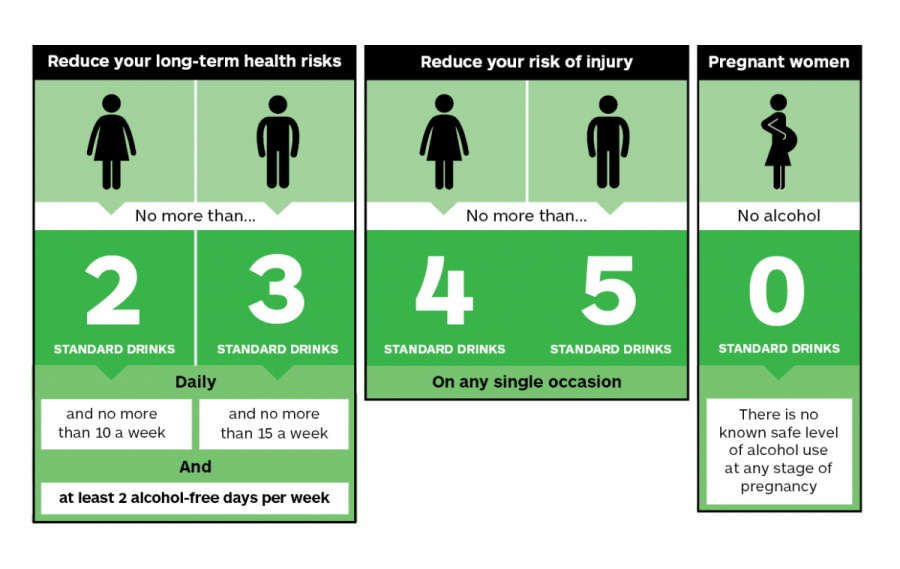Standard drinks and legal limits
In Aotearoa, a standard drink is a measure that can help you think about how much you’re having to drink. Some people can also use this as a guide when they are learning to cut back.
Drinking 'responsibly'
Alcohol is an intoxicating drug. It can get in the way of our decision-making. We also can make mistakes when it comes to judging our own tolerance.
You may recognise some of these risky ways of thinking:
- “I am drinking the same amount as my mates so I’ll be okay.”
- “I only drink beer which has a lower alcohol limit so I’ll be fine.”
- “I can’t taste the alcohol so it doesn’t affect me.”
These are just some of the many myths related to what counts as a ‘safe’ or ‘responsible’ drinking level. In reality, this level is zero.
Standard drinks
A standard drink is used to show how much alcohol is in a drink regardless of the percentage.
In Aotearoa, a standard drink contains 10 grams of pure alcohol.
Every can, bottle, or cask of alcohol must have a label that tells us how many standard drinks are inside them. This number depends on the strength or percentage of the drink and the amount in our glass.
Understanding standard drinks is helpful because:
- counting glasses on their own is not the easiest way to measure how much you’ve had to drink.
- one common serving of alcohol at a bar is often more than one standard drink
- looking at labels and counting standard drinks can help you monitor how much you’ve been drinking.
- many healthcare organisations use standard drinks when providing guidance on low-risk drinking.
Low-risk drinking advice
To reduce long-term health risks, have at least two alcohol-free days each week and drink no more than:
- Two standard drinks a day for women
- Three standard drinks a day for men
- Ten standard drinks a week for women
- 15 standard drinks a week for men
To reduce your risk of injury, do not drink more than:
- Four standard drinks at a time for women
- Five standard drinks at a time for men
Low-risk is not ‘no risk’. These limits can be a helpful guide, but all bodies are different based on:
- your rate of drinking
- body type or genetics
- existing health problems
- medication
- sensitivity to alcohol
- age
- how much you’ve eaten

Chart showing low-risk drinking advice
When not to drink
Do not drink if you:
- are pregnant, planning to get pregnant, or are breastfeeding
- are under 15 years old
- are on medication that interacts with alcohol
- have a condition that might be made worse by drinking
- feel unwell, depressed, tired or cold as alcohol could make things worse
- are about to operate machinery or a vehicle
- are doing anything that is risky or requires skill
Drink driving limits
Legal drinking limits are set up to reduce potential harm, but all bodies are different. Go to the Waka Kotahi website for more information about drink driving limits.
The best thing is to not drive if you are drinking at all.
Peer pressure can often be the cause of someone drinking and driving. We all have a part to play in stopping this from happening. Keep an eye out for friends and whānau when you’re drinking together, and make sure that you have a plan early on for everyone to make it home safely.
Thank you for your feedback.
You can also find a support service if you need to talk to someone.